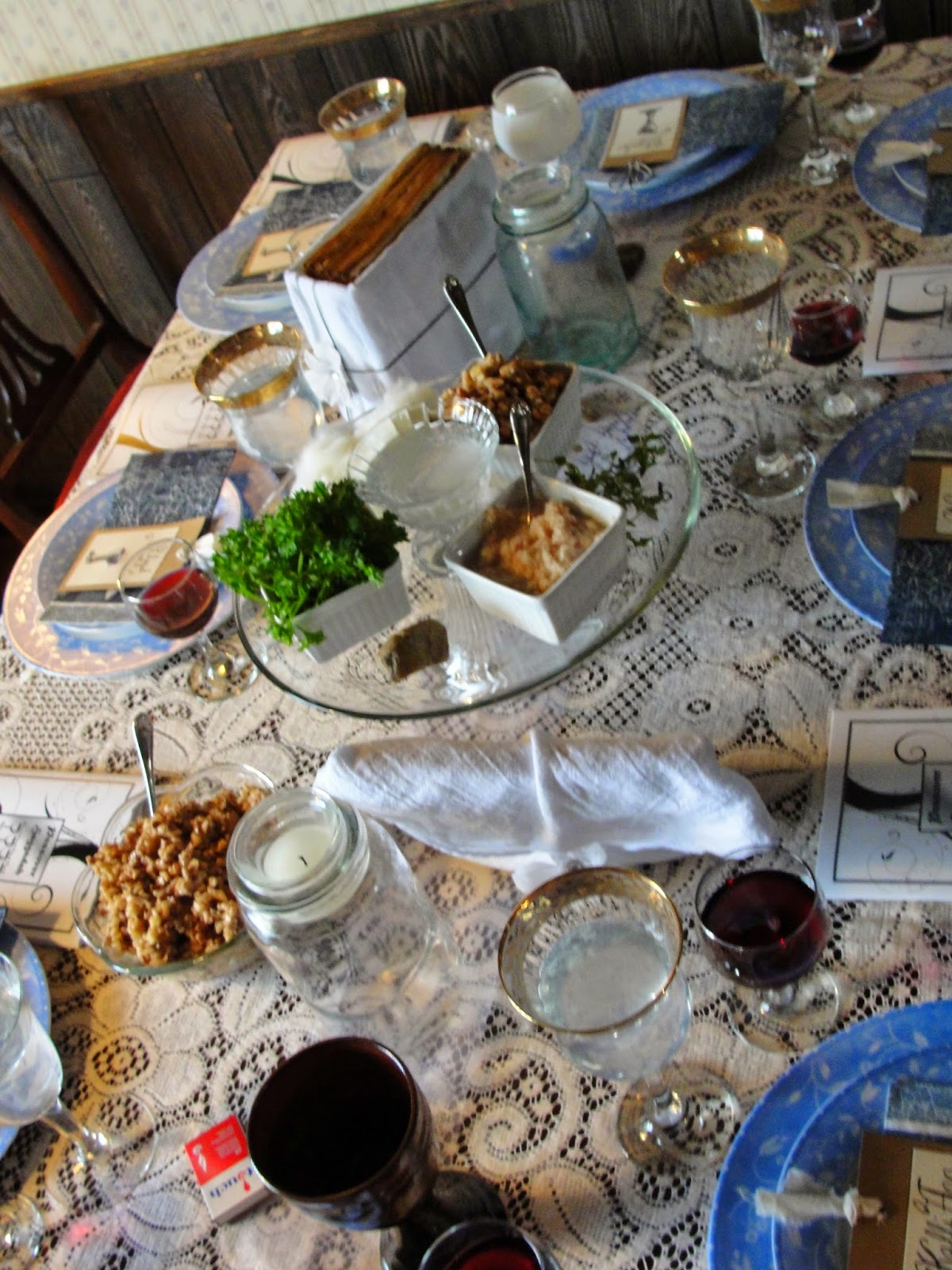I love Passover, yes even the cleaning and the prep! It makes the week so much more satisfying when it arrives. We had a small seder just my parents and Grandparents this year, we had invited a couple others besides but unfortunately they were unable to come. So in the end Elijah had more room at the table :).
The funny thing about our seder's is they are never quite the same. Yes of course we do the same things every year but it always looks a little different, it keeps things interesting :)
I made bookmarks for each place setting, not only did it serve the practical purpose of seating but everyone was able to use them as haggadot markers as well.
I made them ahead so I went for a neutral coloured paper and used strips of scrap fabric for the fringe.
Do to our table being significantly decreased in size since last year I no longer had table room to put extra matzot on my silver plates as I have in the past so I improvised really quick the night of the seder and took a spare linen towel and covered the matzah box with it, tied blue and white cotton crochet thread around it and finished it with a white flower hair clip. I think this wins thrifty award for the year if I do say so myself!
For our seder plate I used our glass pedestal cake plate and three small square dishes we had in the cupboard in which I placed the charoset, maror, and karpas.

In the middle I put parfait type dish in the centre with the salt water for dipping. The empty spaces I filled up with the remaining items: sheep wool, a stone, and a few springs of thyme(which I consider a bitter herb). We used the sheepskin wool in lieu of the traditional shank bone this year. We choose to leave the egg off the plate and have instead a stone to remind us of three things: Pharaoh's hard heart, G-d's promise to remove our stony hearts and give us hearts of flesh, and lastly that the stones of the Temple will once again be raised up when Mashiach returns!
 |
| The Echad |
After polishing the candle sticks I discovered I had used the last of our shabbat candles....hmmm well no problem I pulled out our trusty crown mason jars and a couple of the half burned votives from my sisters wedding last year (wow yes that was exactly a year ago!) and viola.
Menu for this year consisted of honey chicken, garlic-horseradish mashed potatoes, and Thai cucumber salad.
Homemade lemon ice cream and lemony coconut macaroons for dessert.
 |





